What is a Church? - Our honest sexton tells,
‘Tis a tall building, with a tower and bells.
(The Borough) Letter ii. ‘The Church’, II
George Crabbe. 1754-1832.


As well as a church in Island Road the Ferry
Road residents weren’t forgotten with this Mission
Hall and Sunday school in Stanley Road.
As usual Coulton W. Hunter, who made his
money in various local engineering enterprises, was
one of the prime movers in providing places of
worship for the ungodly masses.
In connection with a building fund for the
present church in Island Road built on land donated
by C.W. Hunter, Church historian George Parker
noted that:
“The securing of the site [Island Road] gave an
additional stimulus to the church building fund which
amounted to £200 a year.”
1914..£130. 13. 7d
1915..£134. 16. 2d
1916..£229. 10. 7d
1917..£212. 15. 8d.
1918..£219. 10. 9d.
1919..£239. 5. 3d.
Making a total of £1166. 12. 0d.
“1914 brought the Great War, & parochial life
was somewhat changed, most of the men were
working night & day, seven days a week, others had
gone to lay down their lives at the front, whilst the
mothers in their spare time busied themselves in the
making of comforts for the soldiers.”
On the social side St John's was very
conspicuous.
On New Years Eve 1914, & New Years Day
1915, Mr C. W. Hunter very kindly promised to
entertain 1,000 troops stationed on Barrow Island.”
C.W. Hunter’s residence built on the site of Old
Barrow Farm. It later became St Patrick’s presbytery,
now it is sheltered flats.
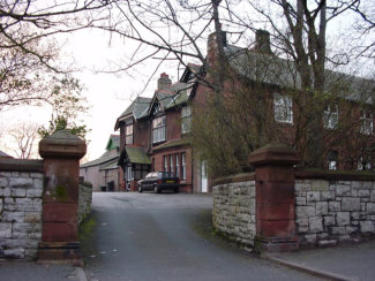

The original 1878 St John’s Church, Island Road & Parish Hall (1899).
Extract from 'The History of St John's (1871-6) Geo. Parker.
The birth of St John's Parish practically took place when the pioneers of Barrow's commerce and industry tore up the green fields and
thereon constructed huge docks, and Shipbuilding and Engineering works.
But in the beginning when the fields were green and the sand hills scattered their sands before the winds, the work of sowing the seed
of Christianity was uphill and heavy. In those days when navvies were digging on the island like a colony of ants, their social and spiritual
conditions were of such a deplorable character as to make one fair blot them for ever from memory. The miserable little huts they dwelt in,
two roomed dwellings, in which families and lodgers were huddled together to a shameless degree.
The walls were papered with pictures of boxers, murderers and all manner of horrible things. Drunkeness, fighting and gambling were
vices raging unchecked, uncontrolled among the navvies and can still be remembered by a few of the oldest inhabitants today. the Minister
to the spiritual and temporal wants of such as these, the Rev. John Allen was called in 1871, (to 1876). He was at that time senior curate of
St. George's, in which parish Barrow Island was. It was a stupendous task even for a minister of the Gospel to undertake.
The navvies were shy of entering the Mission Room, and the curate accompanied by his two sons would often head a procession of his
surpliced choir and go to the men lying about the fields and sand pits, the choir would then form a semi-circle round the clergyman, who
after the singing of several hymns, would deliver an earnest address to the men. After he preached as many as five sermons on Sundays to
the men in the open air, and in the Mission Room. House to house visitation was the curate's constant employment, he would see and speak
to the men at their homes, for they worked on the day and night shifts, and very often some would be sitting at home on their return from
work waiting for their fellow lodgers to get out of bed.
Yet Mr Allen loved the navvies, though their mouths were full of cursing and bitterness, and his admiration for their honour and other
good qualities was repaid by respect and goodwill. Still, it can be readily understood, living as they were amid such unsanitary conditions,
with little prospect of anything better from their employers and the owners of the property, the germs of infectious diseases were being
spread, and in time the small colony was stricken down with diphtheria and small pox.
There used to be a lot of irresponsible preachers from the towns to be seen at every row end of the huts on Sundays, whose mouths
seemed full of the words "hell" and "damnation," words so frequently on the lips of the navvies themselves as to lose their terrifying effect.
When the scourge of small pox came, the preachers of "hell and damnation" had gone and were seen no more. But there were three devoted
Christians who toiled all day and ceased not, the Rev. Allen, the doctor and the Roman Catholic priest. Neither horror or fear beset the
curate's soul, for sometimes he took his sons with him when visiting. Yea, when diphtheria followed rapidly in the wake of small pox, his only
daughter a child of six was carried away in a few days and lies buried in Walney Churchyard. When the fever broke out the mission Room,
situated near where the Harbour Office now stands, was converted into a fever hospital, and after the fever abated all the contents were
destroyed to prevent contagion, so devastating had the scourge been, that practically all Mr Allen's work had to be recommenced.
A new Mission Room was built when the Shipwrights began to displace the navvies, and better progress was made. A Sunday School,
Band of Hope, Fife and Drum Band and other organisations were set on foot.
When at last the docks were reaching completion, other huts were erected near the Walney ferry, and these were called the Crow's
Nest Cottages.
The Mission Church was built especially for the shipyard men, and when the present church was built, the old Mission Church was
converted into an institute and in its better days became known as Mr Gillespie's boat house.
Rev George T. Dunne. 1880-1891.
The second vicar of St John's was the Rev George Thomas Dunne who preached his
first sermon in September 1880.
Mr Dunne came with strong views on the temperance question and so carried on
the good work done by Mr Warren.
His chief work however, was the introduction of the "Penny Dinners" during the
winter of 1886, this was owing to the large amount of poverty on the island caused by
the general depression of work, the shipyard being practically closed.
For the sum of one penny people could obtain a good substantial meal and could
either take it home or eat it on the premises.
To give some idea of the magnitude of this work one could mention that the
number of dinners distributed was 32,890, the numbers of breakfasts 21,582. 152lbs of
tea and 21,420 loaves of bread were consumed, the total cost being £370. 15s. 2d.
£306. 8s .0d was received in public subscriptions and £64. 7s. 2d was taken in cash for
meals supplied.
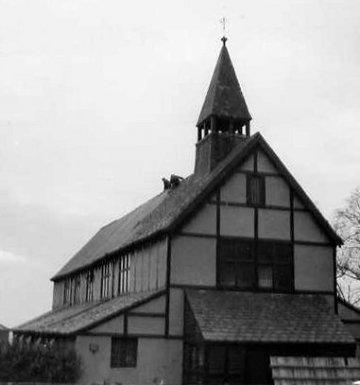
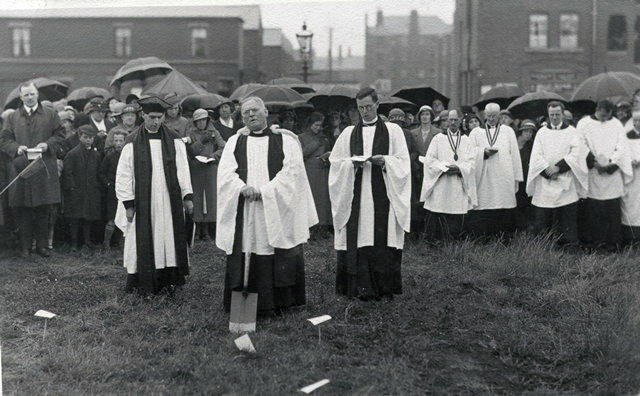
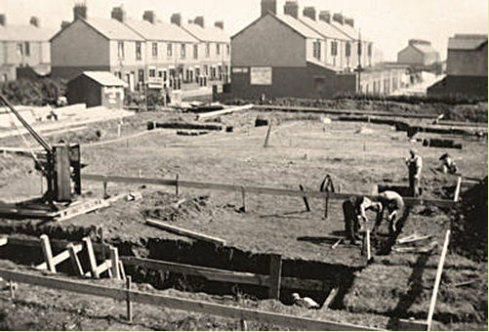
Cutting the first sod for St John’s Church (Island Road),
1932.
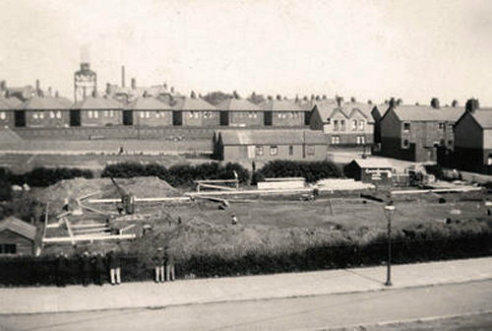
Foundations take shape on the corner of Island Road & Dunbar Street
The religious centre of Low Furness since the dissolution of the monasteries by Henry VIII, had been Dalton, in whose parish and under
whose jurisdiction the whole area came. As Barrow grew it needed religious autonomy and places of worship of its own.
Built at Ramsden’s instigation with other people’s money, St George’s Church was consecrated in 1861. It was Barrow’s first proper
church and until St James’ Church was built in 1869: Barrow’s only church.
St George’s curates with the Catholic priest tried to bring some sanity to ‘Dodge City’ in the early 1870’s. By and large they were
successful, tempering the worst excesses of the sometime drunken labourers and providing comfort and succour for their families as they
suffered in the most atrocious living conditions of decease and filth.
By 1889 Barrow was becoming quite an affluent working class town. Barrow is often referred to as being a 'town with a pub on every
corner, this was only the case during the early years and really only in the town centre and a small area of the long gone slums of old
Hindpool.



What could have been a concrete monstrosity turned out fine. St
John’s today, is a handsome edifice modelled on a church in Nazareth. All
these construction photos were taken by Percy Jones 1908 - 2009.
Percy was recognised by the Guinness Book of Records as the longest
serving “choir boy” in the world!
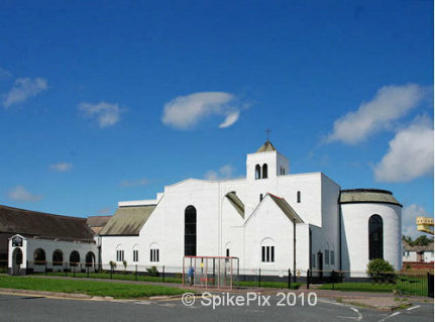
St Patrick’s Roman Catholic Church
St Patrick’s began life as a chapel of ease sometime in the late
1870’s being served from St Mary’s. At that time Barrow was
expanding rapidly and large population had grown up on Barrow
Island. It was made of corrugated tin and was next to the Anglican
and Non-Conformist’s Mission Hall and Board School down amongst
the brick built shipyard Huts, before they were demolished.
As part of Walton Lee’s grand plan for Ferry Road, a school
and chapel were erected in St Patrick’s Road in 1885. Built of bricks
and tin the chapel was used until the present St Patrick’s church
was built. Both the school which closed in 1960, the pupils being
transferred to the newly built St Columbus school on Walney and
the chapel have now been demolished.
In 1901 St Patrick’s was formally set up as a separated parish,
Father Barry being the first parish priest. The numbers in the area
of the parish continued to grow, especially on Walney Island. In
1916 a chapel of ease was set up on Walney. In 1933, the present
church of St Patrick was built and opened in Michaelson Road. The
clergy moved into an existing (and very large!) farm house, that
continued as the presbytery until 2003 when the last resident priest
Fr Jim Allen left. Upon his move, the parish was linked to St
Columba’s and is now served from there.
In 1949 St Columba’s was separated off and made a new
parish. To a certain extent that began a long slow decline for the
Barrow Island parish. The parish school closed and by the 1970’s
those attending Mass had declined to around 120. At this point the
church was substantially remodelled – one half being the church the other half a church hall. In 2000 the church was re-ordered according
the customs of the neo-catechumenal way.
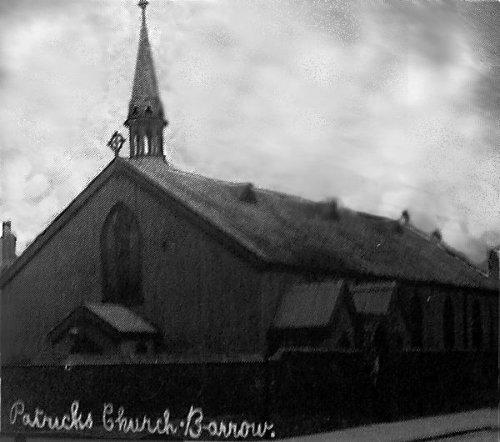

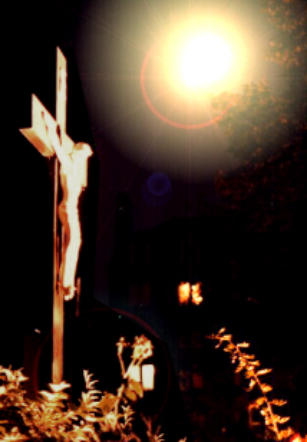
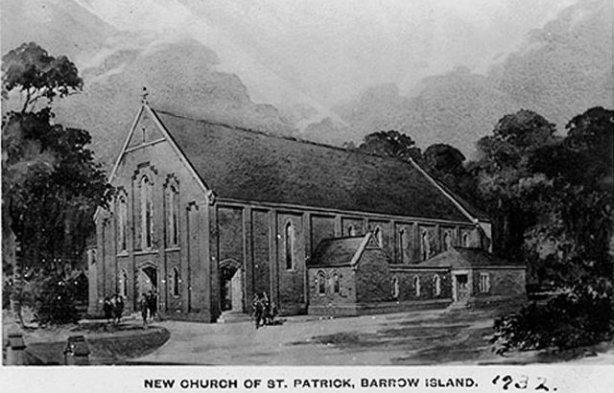
1932 Artist’s impression
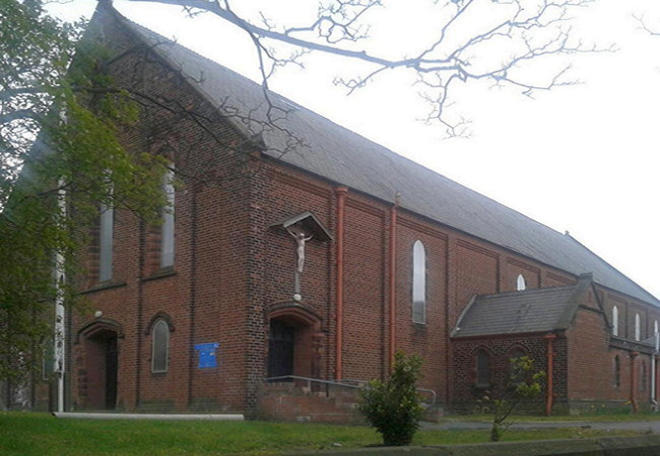
The Crucifix was moved to the side of the building after many vandal
attacks. St Patrick’s Church opened, 1933, closed 2013.
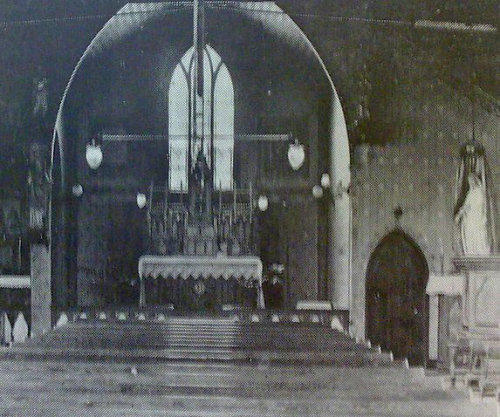
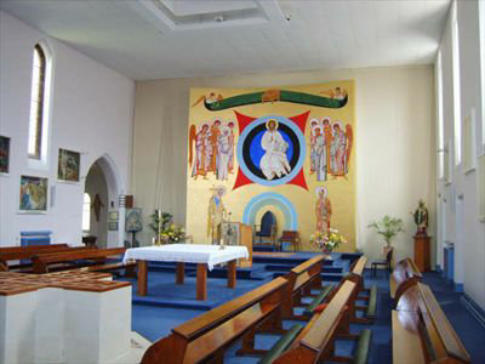
LEFT: Old St Patrick’s Road church interior.
ABOVE: St Patrick’s, interior of Michaelson Road Church.
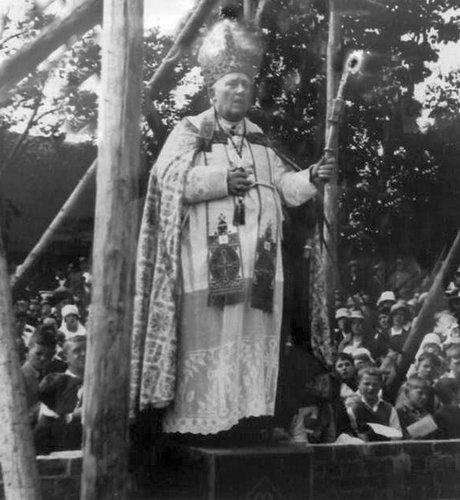
Bishop of Lancaster at the start of construction 1932


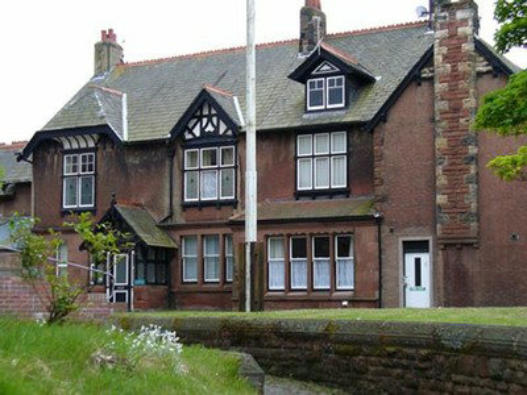
Parochial House
A serene Queen of May with her faithful retainers, May Day
1960
Altar Boys 1961 (Info & Picture source, thanks to Keith
McGill).
St John the Evangelist
Thanks to Alan Wilkinson for the cutting


